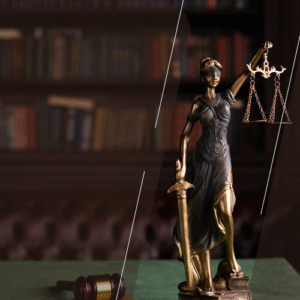Set aside CCJ for mortgage by submitting an application to the court.
How to Set Aside a County Court Judgment (CCJ) for a Mortgage Application
A County Court Judgment (CCJ) is a legal decision issued by the court, requiring you to repay a debt you owe to a creditor. Having a CCJ on your credit record can severely impact your ability to obtain credit, including a mortgage. However, under certain circumstances, you can apply to set aside a CCJ, which can improve your creditworthiness. Here’s a step-by-step guide on how to set aside a CCJ for a mortgage.
What Does ‘Setting Aside’ a CCJ Mean?
Setting aside a CCJ refers to the process of cancelling the judgment, effectively removing it from your credit file. When a CCJ is set aside, it is as if the court order never existed, and both you and the creditor return to the same legal position as before the judgment was made. However, it’s important to note that setting aside a CCJ does not erase the debt itself from your credit file; it merely reopens the case for reconsideration.
Steps to Set Aside a CCJ
- Complete Form N244
To apply to set aside a CCJ, you must fill out and submit Form N244 to the court. This form requests the court to reconsider the judgment, and you must clearly explain why the judgment should be set aside. The form can be obtained online from the UK government’s website or from your local county court. - Provide Valid Reasons
You need to give a convincing reason to the court as to why the CCJ should be set aside. Some valid reasons include:- The judgment was sent to a previous address, and you did not receive the court papers.
- The debt amount claimed was incorrect, or you dispute the debt entirely.
- The creditor failed to follow proper procedures, such as not responding to your communications or not serving the court papers properly.
- The amount claimed by the creditor is wrong or overstated.
- Pay the Court Fee
There is a fee involved in submitting Form N244, which varies depending on the complexity of your case. In certain situations, you may be eligible for a fee waiver based on your financial circumstances. - Attend the Court Hearing
Once your application is submitted, the court will schedule a hearing. At this hearing, both you and the creditor will present your arguments. The court will then decide whether to set aside the CCJ. It is highly advisable to seek legal advice or representation for this hearing. - Impact on Your Credit Report
If the court sets aside the CCJ, it will be removed from your credit file, making it easier for you to apply for a mortgage or other forms of credit. However, the debt will still exist, and you will need to resolve it either through negotiation with the creditor or by defending the case if it goes back to court.
Reasons to Set Aside a CCJ for a Mortgage Application
- Incorrect Address: If the judgment was sent to an old or incorrect address, and you were unaware of the proceedings, this can be a valid reason to have the CCJ set aside.
- Disputed Debt: If the debt claimed was not accurate, or you do not believe you owe the full amount, this could justify setting aside the judgment.
- Lack of Response from the Creditor: If the creditor did not respond to your communications or failed to follow the correct legal procedures, this could also be grounds for setting aside the CCJ.
- Incorrect Debt Amount: If the creditor claimed an incorrect amount in the judgment, you can apply to set aside the CCJ to correct the debt.
Frequently Asked Questions (FAQs)
Q: Will setting aside a CCJ remove the debt?
A: No. Setting aside a CCJ only removes the judgment from your credit file, but the debt will still exist, and the case may proceed in court.
Q: How long does it take to set aside a CCJ?
A: The process typically takes several weeks to months, depending on the court’s schedule and the complexity of your case.
Q: Can I apply for a mortgage while I have a CCJ?
A: It is difficult to obtain a mortgage with an active CCJ on your credit file. However, once the CCJ is set aside, it will improve your chances of securing a mortgage.
Q: What if the court rejects my application to set aside the CCJ?
A: If your application is rejected, you will still be responsible for the debt, and the CCJ will remain on your credit file for six years.
By following these steps and understanding the process, you can take the necessary actions to improve your chances of getting a CCJ set aside, making it easier to move forward with a mortgage application.








